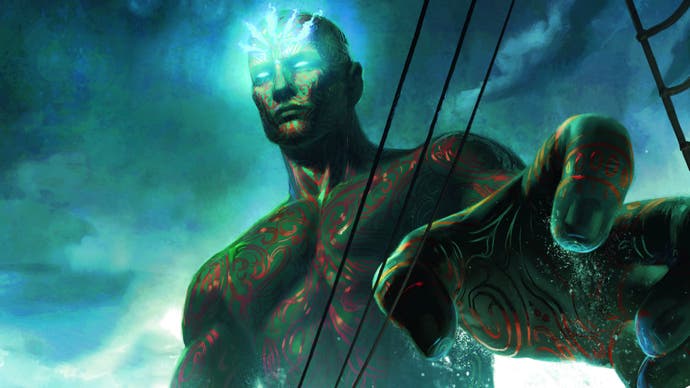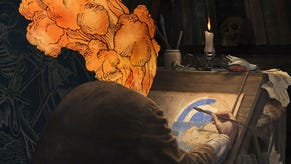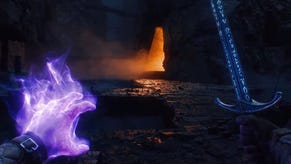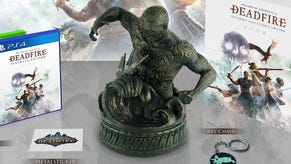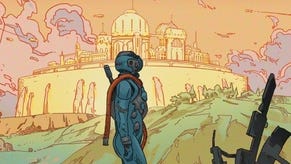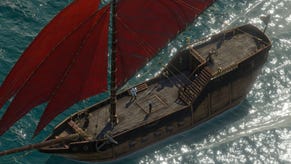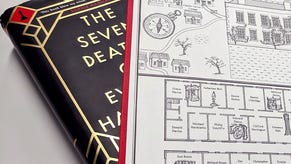Pillars of Eternity 2: Deadfire review - a golden doubloon of an RPG
Titanic.
No sooner have I found a way to convince the chief snake person of my unique soul-seeing powers as a Watcher than I am touching the mountainous glowing crystal he was guarding and talking with a god, the one everyone is after - the one who has occupied a titan previously buried under my castle and is now crashing across the Deadfire Archipelago on some unknown mission, sucking the souls of thousands of people as he goes. What is it he wants?
My feet barely touch the deck of my ship before I'm whisked away again by the other gods, a strange bunch, who want to know what their trampling brother is up to. And they're not the only ones. I need to sail my report back to the queen of this Caribbean collection of islands to fill her in, lest her many rival powers discover a weakness they can exploit for further gain. I'm like the piggy in the cosmic, and not-so-cosmic, middle - everyone wants a piece of me. Then as if to compound the issue, I'm attacked by pirates. Twice.
To say there's a lot going on in Pillars of Eternity 2: Deadfire would be an understatement. By taking the sequel to sea, Obsidian has found not only a sunny and ebullient new setting - refreshingly based in a non-white, non-human culture - but a way to spread the whole world out. There's an ocean's worth of places to explore, and sealing them on all sides by the sea makes these places discrete little pockets of adventure with their own styles, stories and themes.

What's so marvellous about the way Pillars of Eternity 2 handles the quantity is the way it breaks proceedings up and varies them. Take the string of events outlined above: getting to the snake chief involved lots of typical RPG battling and exploration, but talking to the gods happened via a kind of storybook mechanic combining narrative and illustration. Naval warfare is handled in a similar way. Instead of pushing little boats around I instead choose orders listed on a page of a book - full speed ahead, turn to port, fire cannons, etc. Meanwhile drums thump, sailors shout and cannons roar - it's a story brought to life.
This continues in vignettes dotted throughout the adventure handling surprise encounters, environmental puzzles and more. They are a perfect vehicle for delivering moments otherwise hard to realise in the game and to see them from an imaginative perspective. I can't imagine an encounter with the gods being anywhere near as dramatic when explicitly put before you, isometrically.
What's more, these sections reinforce the game's tabletop role-playing roots, as players are offered choices above and beyond their rote skill tree to solve special situations. Characters can use spells or abilities to aid in seeing out a storm at sea, for example. A cipher can enter the minds of sailors and forcefully increase morale; a ranger can send a bird to scout ahead and see how long the storm will last; or a druid can affect a tempest directly.
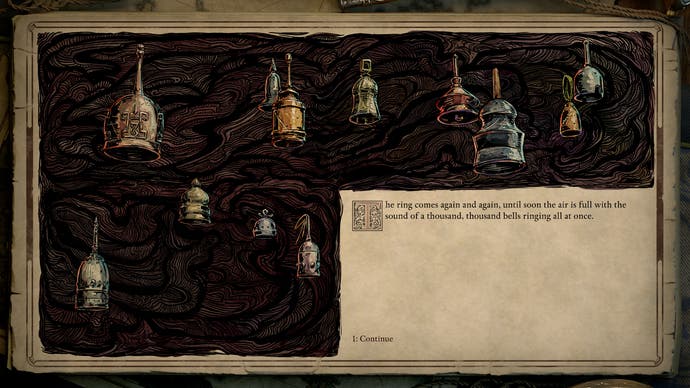
It's another layer in a game of layers, and within each is considerable depth. Consider the sailing again: it's not only a freeing way to travel but also an entire additional side-game to tinker with and think about. Ships need to be crewed, you see, and crews come with various skills and experience, which improve the more storms they weather and battles they see (and survive). You can buy new cannon, new hulls, new sails and a new wheel, and upgrade interiors for more comfort. You can even buy new ships, although they're very expensive. You must also refresh supplies like medicine, repair wood, cannonballs, water and food (which have varying effects on your crew's abilities and morale - or your party while resting - depending on what they are) which deplete over time and use.
Consider the nuts and bolts RPG side of the game. In Pillars of Eternity 2 there are 20 character levels to play with rather than 12 as in the first game, which means eight increasingly more powerful levels of spells and abilities. There are also subclasses, such as the Helwalker monk I chose - who inflicts extra wounds (a monk resource) upon herself when entering battle - as well as the option to multi-class. You can even program your party's AI person by person, as in Dragon Age: Origins, specifying actions for every possible outcome before letting the real-time combat flow.
Depth can be felt in the companions you surround yourself with, too, who are more than they at first seem. They're funny and warm and brought to life wonderfully by the actors behind them, and they're much more present in your affairs if you let them be, interjecting with their two pennies' worth, even bickering amongst each other. There's a new inter-party relationship system menu where you can see their likes and dislikes and how they're getting along with everyone.
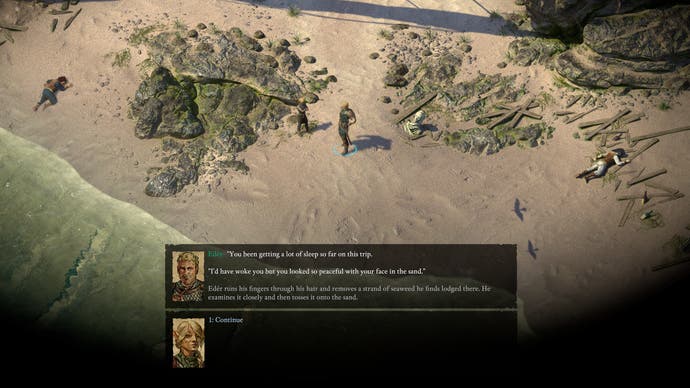
The humour they bring radiaties across the whole Deadfire Archipelago. There's much less of the po-faced fantasy than I had expected here. It's as though Obsidian has been at the local rum and has let its hair down in the sea breeze, and Pillars of Eternity 2 is all the more fun for it. Perhaps Pillars 1 being the more serious debut cleared the way. Whatever it is, the sequel constantly made me laugh, not least because of the dastardly things you can say in dialogue, which are amusing whether you choose to say them or not.
The companions also become a vital tool for the impossible choices the game puts to you later on. They're all, in some way, affiliated with one of the vying powers, and won't like you going against them. There are no easy outs. I thought I had a plan all figured out until a companion I cared about threw a spanner in the works; sooner or later you will face a decision you don't want to make.
No corner of the Deadfire Archipelago is forgotten, and the production quality in general is tip-top, a clear step up from Pillars of Eternity 1. Settlements are all painstakingly put together and brought to life, like dinky little toy sets before you, tiny grog tankards and hunks of bread on the tiny tables. The air teems with gulls as palm leaves sway beside rain-soaked muddy streets, and in your ears waves break gently against the shores, sailors sing shanties, and simple string or woodwind melodies lift you along.
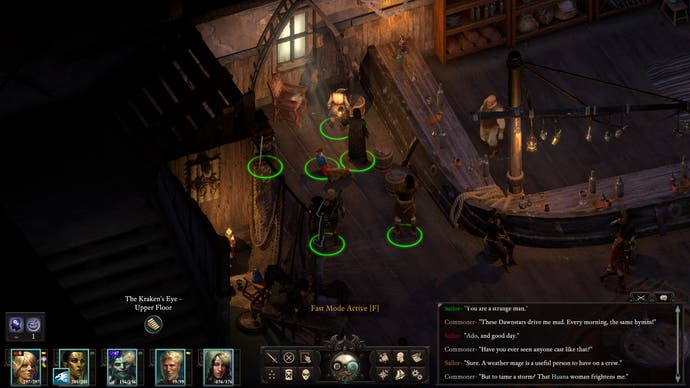
There are many less obvious - but no less important - learnings from Pillars 1 on show, deft touches of expertise, if you will. They're little but lovely things like weapons no longer penalising you for not being proficient with them but instead rewarding you for proficiency with extra abilities, or being able to fast-travel directly to a location within a larger location, saving a lot of time overall, or having highlighted words offering explanations or translations in text, meaning the dialogue can concentrate on being natural and atmospheric.
The clarity of combat has improved, a big issue from Pillars 1, although there's still a baked-in fiddliness from selecting small characters on a busy battlefield using a camera which doesn't rotate. And although spells and abilities are flashier than before, there's still a sense they don't quite live up to their dramatic billings, and still a rigidity to battles as you bob on the spot waiting for the next mechanical round of combat to begin.
But for all of it, all the juicy depth and breadth, I'm left with a sense some things don't quite add up. In the end it didn't really matter how much effort I'd put into sailing, which made it all feel like a distraction, albeit a thoroughly enjoyable one. Equally, nothing seemed to come of the inter-party relationship system (which may be because I didn't fully explore all companion questlines).
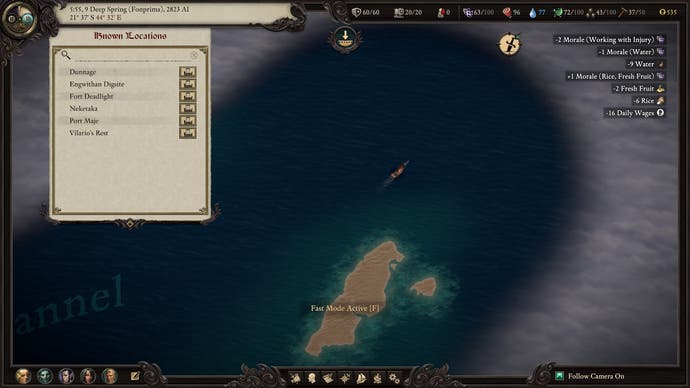
More disappointing, though, was the lack of effect I had on the main story. It felt as though the story had a course and all I could really do was watch and boo or cheer, as though I was a celebrity with ringside seats but nothing more, which is unusual for an Obsidian adventure. More annoyingly, it seemed to build to a crescendo and stop before the final climactic chord, teasing rather than showing what happens next. The many layers didn't quite tie up in to a satisfying sailor's knot of a finish.
Then again, perhaps I'm missing the point. Perhaps the celestial stuff was a red herring and the Deadfire Archipelago - the people and not the gods - was the story. It's something I've been thinking about a lot, and I like thinking. It's the reason I play role-playing games, to ponder over everything, however insignificant. And from sailing the high seas to dealing with dodgy underworld bosses and insatiable gods, Pillars of Eternity 2 gives me ponderance in abundance. The Deadfire Archipelago is a bountiful tropical playground I will happily plunder again and again. How long this golden RPG doubloon shines I don't know, but for now it's worth savouring, for now it's worth celebrating.
